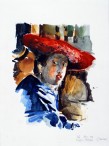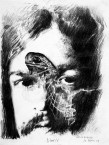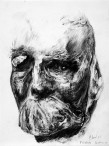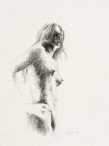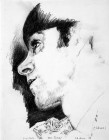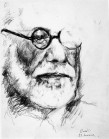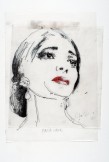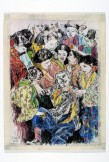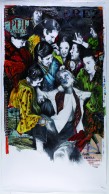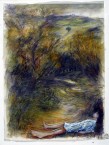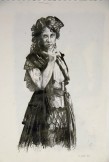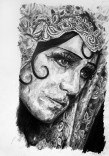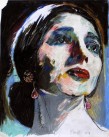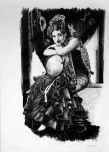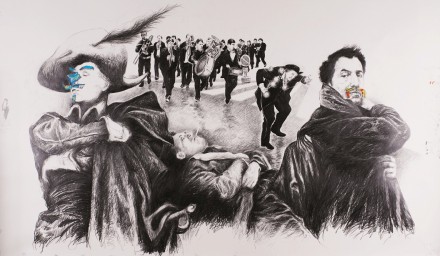CHAMBAS
Dessiner
Exhibition from 19th October 2011 to 21st January 2012
Chambas through the activities of decorator and scenographer , is always thinking primarily as a painter. “I am a painter who, as a painter, is doing a decoration for a specific show. “
However, his work for the theater and the opera (with Michael Deutsch, Jean Pierre Vincent, Claude Regy, Wim Wenders, Lucas Ronconi, Antoine Bourseiller …) allowed him to make a permanently and serious reflection on shape, color and meaning.
What to do with images? What status for painting? What relationship the painting maintains with the writing, storytelling, poetry? John Paul Chambas was in conflict with Malcolm Lowry, Peter Handke, but also to Kafka, Poe, W.S Burroughs,…. Rimbaud again and again in the foreground or implicitly, as an immanent presence.
He also wrote books of travel, notes … and writes a journal workshop.
Chambas convenes on canvas ancient myths (The Rape of Europe) and contemporaries Monolete, Callas, Glenn Gould, Jim Morrison, analysis and tirelessly described the painting and its history. Velasquez, Toulouse-Lautrec.
Chambas knows and practices all facets of the trade of painter and draftsman with an exceptional virtuosity.
He knows better than anyone that mastery is nothing without a permanent risk-taking, a voltage where realism exists only in a constant dialectic with symbol.
Since his first exhibition in 1967, he built with ardour a flamboyant work, lyrical, where the images shouts to one another, overlap, cloud the issue, change the perception of the audience. “I have no other subject than what I see. I hope that my subject is not myself, but what I can see with my own eyes. “
Thus, Jean Paul Chambas saw, or rather dreamt, the portrait of Lautréamont which we have no reliable images. To see should not be understood here as a simple scopic effect leading to an unequivocal naturalism, but as an attitude, not the point of view of a voyeur but of a beholder. RImbaud, Lautréamont… For Chambras, would poetry be like painting? It would emerge then as a “fertile and majestic river” and its purpose would be “practical truth,” that of movement, color and sense , irreducibly linked by the same creative tension.
Robet Bonaccorsi



